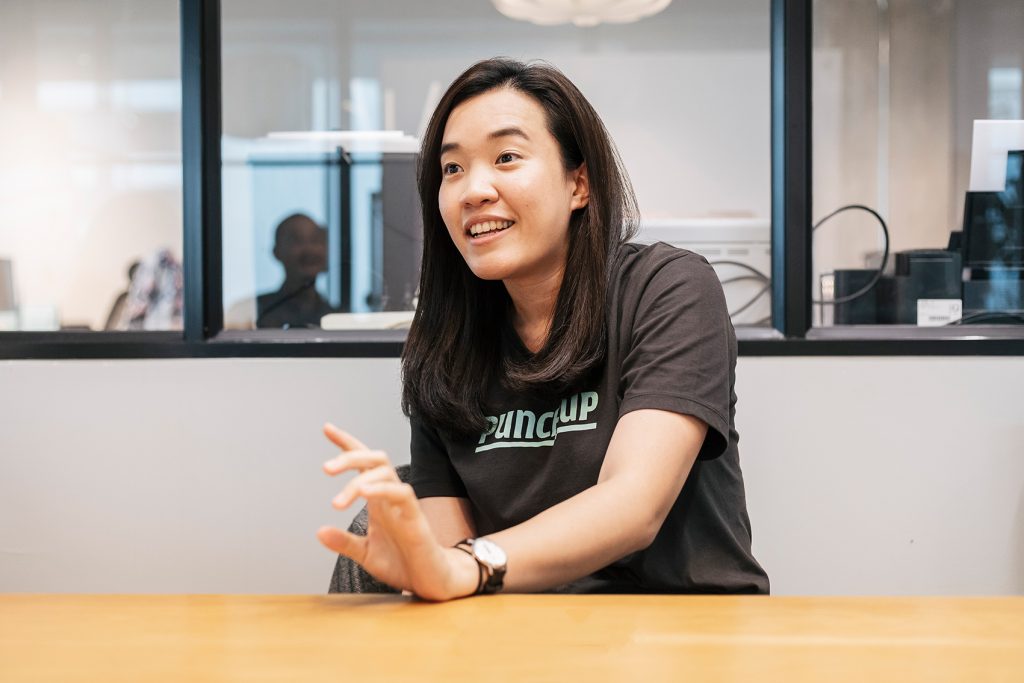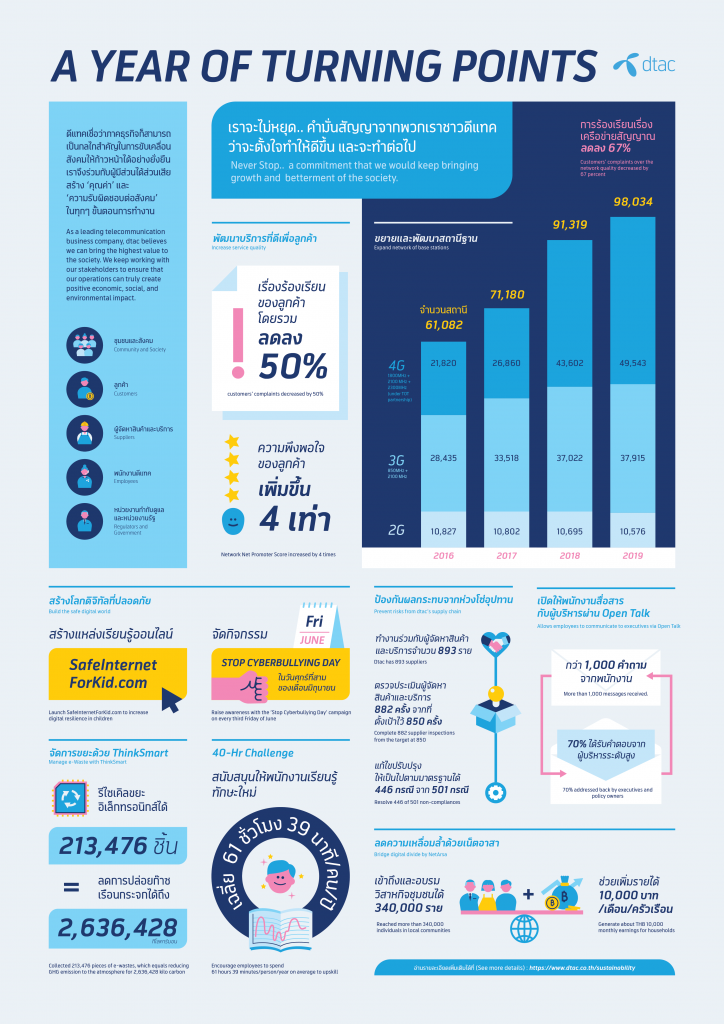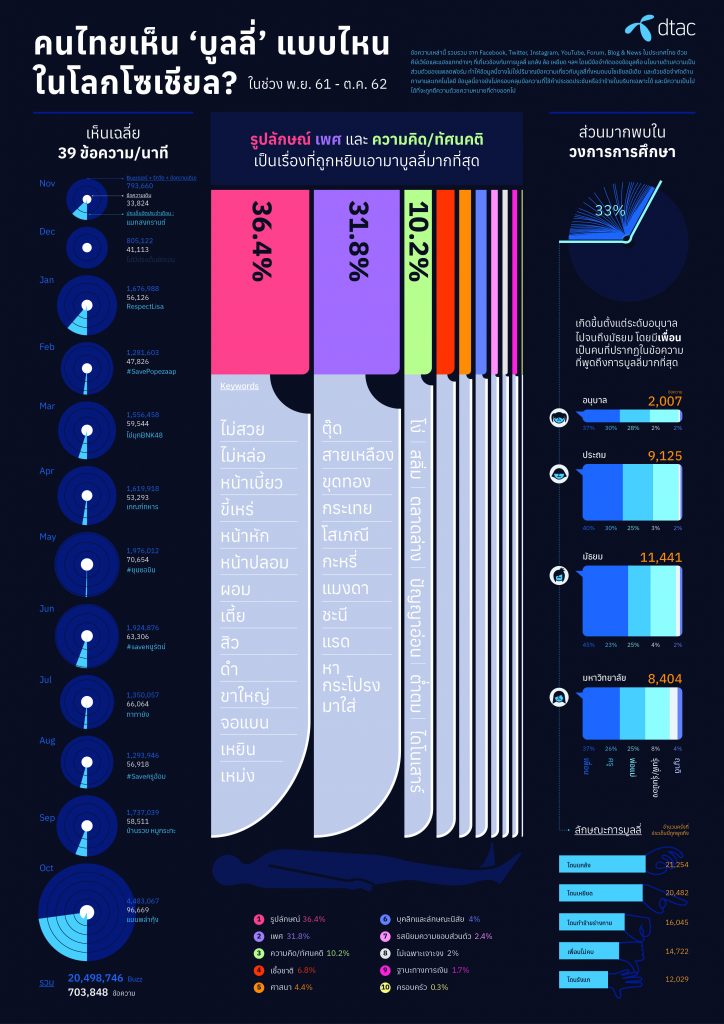In this month’s Impact, dtacblog speaks to the founders of an innovative agency specializing in data-driven storytelling.
In March 2019, an online media outlet “ELECT” sprang into operation with solid information on elections. At that time, Thailand was preparing to hold its first general election since the 2014 coup. ELECT offered a fresh perspective on the election via data, charts and graphics. Behind these infographics was Thanisara “Ging” Ruangdej, who then partnered with Patchar “Fai” Duangklad in founding Punch Up as a Data Storytelling Studio.

“Many people have followed ELECT, making clear that to politics is something people care about. ELECT has attracted users and generated interactions. I also noticed the growing trend of data storytelling in the world. News giants like New York Times in the US and The Guardian in the UK have embraced the trend. So, we wanted to take data storytelling in Thailand farther and go beyond the political scope only. With Punch Up, we are addressing social, economic and environmental issues too,” Thanisara told dtacblog.
Patchar added, “In the past, we thought only media could present information to the public. But after studying business models, we have concluded that we can work as a data storytelling studio. In fact, being a studio even gives us more opportunities. We don’t need to work for just a single organization. We can serve both government agencies and private firms. For example, we have collaborated with dtac in presenting “What forms of bullying Thais have seen in social media?” and “Sustainability Report through Data Visualization” for the purpose of delivering easier-to-understand content to audience”.


Data Storytelling
Thanisara says most debates have had no end usually because of subjectivity as each person has different experiences and background. She therefore thinks it will be better to provide data to people so that they can think and make decisions clearly. Aware that data alone may fail to attract the attention of people, she came up with the idea of “Data Storytelling”. With the help of data visualization, such presentation simplifies content that would otherwise seem complicated and difficult to understand. Thanisara reckons that data storytelling has existed before she opened her studio. But still, Punch Up differentiates itself with a firm focus on “communications”.
Punch Up’s work process starts with asking the right questions. Its team brainstorms ideas to determine what people want to know about and what types of data will be needed. Then, it lays down data-study framework and work scope.
The next step then is to go into further detail, like how to collect data, how to conduct data cleansing, and how to design communications to best reach out to target audience.

“Each organization may have many sets of data, which prove adequate for its work. So far, those data sets may not be good for data storytelling as they may be rather flat and lack interesting dimensions. For data storytelling, we need something to attract target groups,” Patchar adds.
Start from right questions
Data storytelling has three main elements. The first and foremost is a “source”. If a data story has just one source and there is no clear link to the target group, it may fail to appeal to target audience. When dtac and Punch Up work on “What forms of bullying Thais have seen in social media?”, the two firms compiled information from many sources – a dtac survey plus data scanning through social media – with the help of Wisesight. Such passive data collection gives interesting dimensions to the story on bullying.
The second is “telling a story”. Storytelling enlivens data. If ones just place charts together, the output is a mere report or display meter. But data storytelling is about giving a fun presentation and highlighting a human touch.
The third and the last is ‘Value-Added Design’. Often, people shy away from formidable graphs and charts. At Punch Up, creative designs are used to present data in a friendlier way. Gimmicks and prioritization play role in boosting the appeal of the data story too.
Changing Society with Data
Done through a collaboration with Thai Rath Online, Punch Up’s first data story, “Thai Platu (Thai Short Mackerel) is Going Extinct” made a big impact. It generated huge interest and several other news agencies followed up on the story, which led to practical solutions being implemented. So, both Thanisara and Patchar are confident that their data storytelling is on the right track and their service is something Thai society needs.
Punch Up has since worked on several other stories through collaboration with partners from both private and government sectors. Each story has different challenges. Regarding the story on “What forms of bullying Thais have seen in social media?,” which Punch Up created with dtac, the most difficult part was defining bullying. Thanee Chaiwat of the Chulalongkorn University’s Faculty of Economics was recruited to help formulate a methodology and ensure the academic accuracy of the story.
The other collaboration between Punch Up and dtac is dtac’s Sustainability Report 2019, which is created in the form of data visualization so as to make the content easier to understand. According to Punch Up, the difficult part about this job is how to present data based on the Global Reporting Initiative (GRI) standard in an interesting way. As GRI standard is rigid, there is a risk that data presentation will be boring. Punch Up has therefore drawn data comparisons to create a fun data story that has clear impacts.

“Data storytelling departs from the old way of data presentation. With data storytelling, more time and efforts have been made to compile, store, analyze and use data. Time and energy spent here is like a long-term investment. It is about laying down data foundation for the development towards the future,” Thanisara said.
Patchar added, “Data storytelling does not fit all kinds of stories. If you want to sell products or spur emotions, data won’t help. A data story is good when we need to present clear-cut information, provide proofs, give a conclusion to debates, or offer insight to something people have rarely seen. If an organization has a topic to work on and backup data, we can be of help”.

After opening their data storytelling studio over a year ago, both Thanisara and Patchar have seen many data-driven social changes. In their eyes, such impacts truly resonate with Punch Up’s conviction – “Presenting data in an easy-to-understand and interesting manner will generate constructive conversations in the society”.

